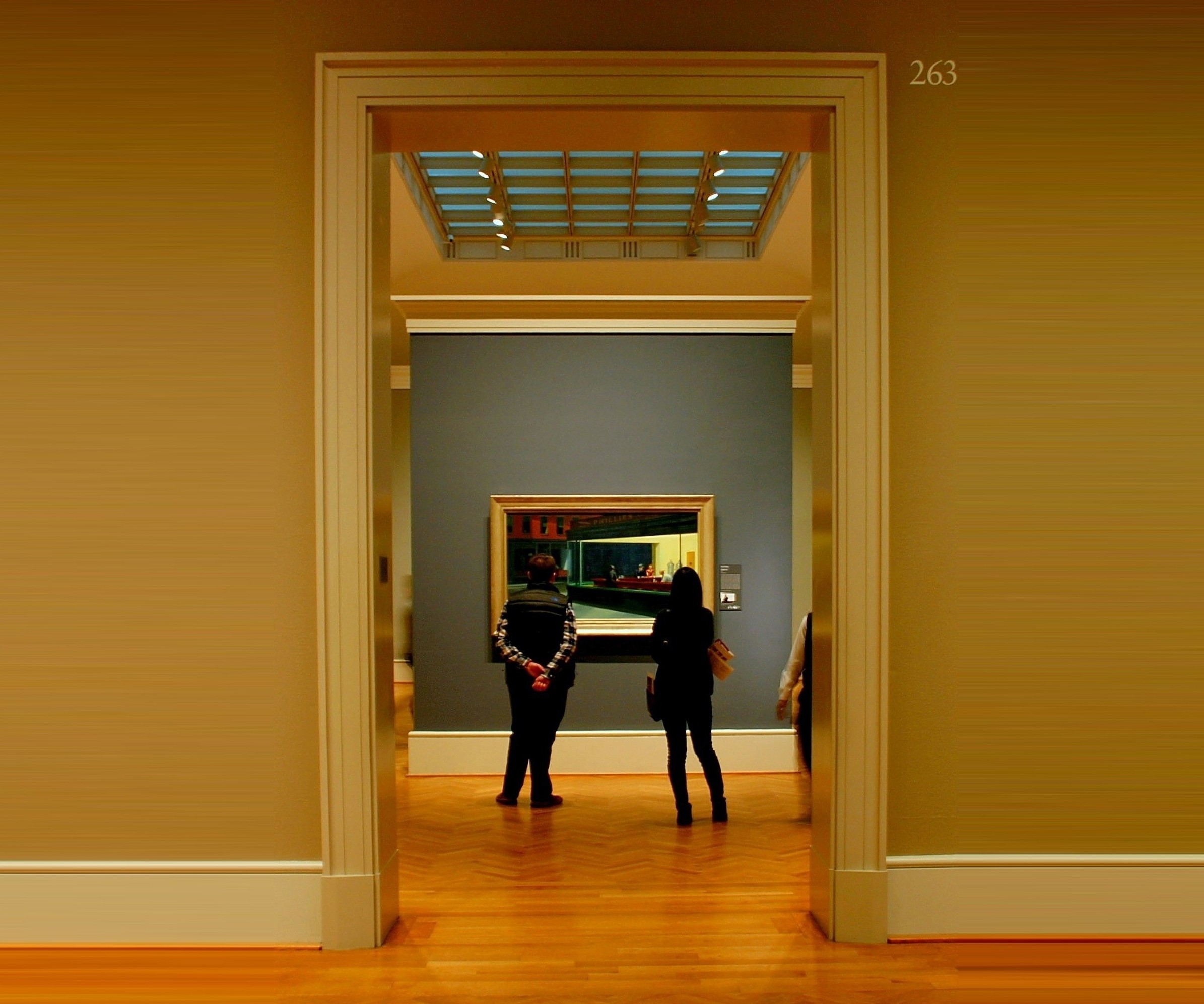I find linseed oil and white lead the most satisfactory mediums.
Meaning of the quote
This quote is about the materials that the artist Edward Hopper liked to use when creating his paintings. He preferred to use linseed oil and white lead as his painting mediums, which are the materials that help the paint spread and dry on the canvas. Hopper found these two materials to be the most effective and satisfactory for his artistic process.

About Edward Hopper
Edward Hopper was an American realist painter famous for capturing the essence of American life and landscapes through his art. He developed his distinctive style while studying in New York, and his works, known for their emphasis on solitude, light, and shadow, have become iconic in the art world and popular culture.
Tags
More quotes from Edward Hopper
More of me comes out when I improvise.
American realist painter and printmaker (1882-1967)
If the technical innovations of the Impressionists led merely to a more accurate representation of nature, it was perhaps of not much value in enlarging their powers of expression.
American realist painter and printmaker (1882-1967)
There is a sort of elation about sunlight on the upper part of a house.
American realist painter and printmaker (1882-1967)
Well, I’ve always been interested in approaching a big city in a train, and I can’t exactly describe the sensations, but they’re entirely human and perhaps have nothing to do with aesthetics.
American realist painter and printmaker (1882-1967)
Great art is the outward expression of an inner life in the artist, and this inner life will result in his personal vision of the world.
American realist painter and printmaker (1882-1967)
I think that zinc white has a property of scaling and cracking.
American realist painter and printmaker (1882-1967)
Well, I have a very simple method of painting.
American realist painter and printmaker (1882-1967)
Painting will have to deal more fully and less obliquely with life and nature’s phenomena before it can again become great.
American realist painter and printmaker (1882-1967)
If I had the energy, I would have done it all over the county.
American realist painter and printmaker (1882-1967)
If the picture needs varnishing later, I allow a restorer to do that, if there’s any restoring necessary.
American realist painter and printmaker (1882-1967)
I believe that the great painters with their intellect as master have attempted to force this unwilling medium of paint and canvas into a record of their emotions.
American realist painter and printmaker (1882-1967)
If you could say it in words there would be no reason to paint.
American realist painter and printmaker (1882-1967)
In its most limited sense, modern, art would seem to concern itself only with the technical innovations of the period.
American realist painter and printmaker (1882-1967)
I trust Winsor and Newton and I paint directly upon it.
American realist painter and printmaker (1882-1967)
The trend in some of the contemporary movements in art, but by no means all, seems to deny this ideal and to me appears to lead to a purely decorative conception of painting.
American realist painter and printmaker (1882-1967)
My aim in painting has always been the most exact transcription possible of my most intimate impression of nature.
American realist painter and printmaker (1882-1967)
In general it can be said that a nation’s art is greatest when it most reflects the character of its people.
American realist painter and printmaker (1882-1967)
The question of the value of nationality in art is perhaps unsolvable.
American realist painter and printmaker (1882-1967)
I use a retouching varnish which is made in France, Libert, and that’s all the varnish I use.
American realist painter and printmaker (1882-1967)
There will be, I think, an attempt to grasp again the surprise and accidents of nature and a more intimate and sympathetic study of its moods, together with a renewed wonder and humility on the part of such as are still capable of these basic reactions.
American realist painter and printmaker (1882-1967)
The only real influence I’ve ever had was myself.
American realist painter and printmaker (1882-1967)
I have tried to present my sensations in what is the most congenial and impressive form possible to me.
American realist painter and printmaker (1882-1967)
What I wanted to do was to paint sunlight on the side of a house.
American realist painter and printmaker (1882-1967)
After all, we are not French and never can be, and any attempt to be so is to deny our inheritance and to try to impose upon ourselves a character that can be nothing but a veneer upon the surface.
American realist painter and printmaker (1882-1967)
I find in working always the disturbing intrusion of elements not a part of my most interested vision, and the inevitable obliteration and replacement of this vision by the work itself as it proceeds.
American realist painter and printmaker (1882-1967)
No amount of skillful invention can replace the essential element of imagination.
American realist painter and printmaker (1882-1967)
I find linseed oil and white lead the most satisfactory mediums.
American realist painter and printmaker (1882-1967)
It’s to paint directly on the canvas without any funny business, as it were, and I use almost pure turpentine to start with, adding oil as I go along until the medium becomes pure oil. I use as little oil as I can possibly help, and that’s my method.
American realist painter and printmaker (1882-1967)
Maybe I am not very human – what I wanted to do was to paint sunlight on the side of a house.
American realist painter and printmaker (1882-1967)